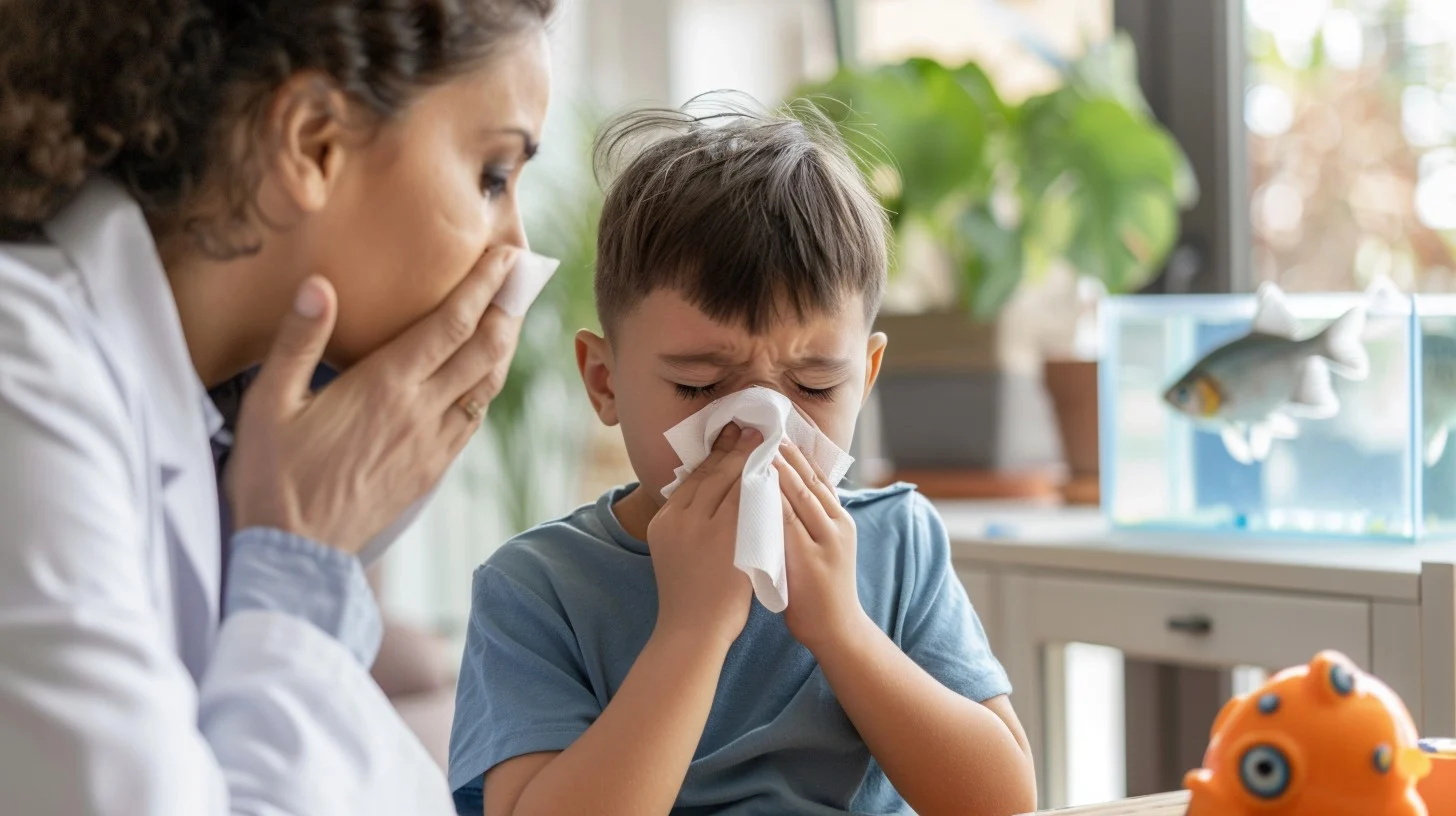Every spring brings a sense of renewal, but for many families, it also signals the start of sneezing fits, itchy eyes, and runny noses. Managing seasonal allergies in kids can feel like a nonstop chore — but it doesn’t have to. With the right approach, you can help your child navigate this challenging season comfortably and confidently.
Let’s dive into everything you need to know about childhood seasonal allergies, their causes, symptoms, and most importantly, effective ways to manage them.
Understanding Seasonal Allergies in Children
Seasonal allergies, also known as hay fever or allergic rhinitis, are reactions triggered by outdoor allergens like pollen from trees, grasses, and weeds. These allergens are more prominent during certain times of the year, especially in spring and autumn. Kids with seasonal allergies experience symptoms when their immune system overreacts to these airborne substances.
Common Triggers for Allergies
- Pollen from trees, grasses, and weeds
- Mold spores that thrive in damp leaves or grassy areas
- Dust and outdoor pollution (can worsen allergy reactions)
- Pet dander (less seasonal, but may be aggravated outdoors)
Recognizing Symptoms of Seasonal Allergies in Kids
Children don’t always articulate what they’re feeling, so it’s important for parents to recognize classic signs of allergies.
- Frequent sneezing
- Itchy, watery, or red eyes
- Runny or stuffy nose
- Coughing or throat clearing
- Dark circles under the eyes (“allergic shiners”)
- Fatigue or irritability
These symptoms often resemble those of the common cold, but they linger longer and usually follow a pattern corresponding to the changing of the seasons.
Diagnosis: When to Seek Medical Advice
If your child’s symptoms persist for weeks and don’t improve with general home care, schedule a visit with your pediatrician. In many cases, allergy testing (skin or blood tests) may be recommended to pinpoint specific triggers. Early diagnosis can help you manage allergies more effectively and reduce unwelcome surprises as the seasons change.
Practical Tips for Managing Seasonal Allergies in Kids
Managing childhood seasonal allergies is not just about treating symptoms—it’s about creating a comfortable, active life for your little one. Here are expert-backed strategies to ease their discomfort.
1. Reduce Exposure to Triggers
Limiting your child’s contact with allergy triggers can significantly reduce symptoms. Try the following steps during peak pollen seasons:
- Keep windows closed in your home and car.
- Encourage frequent hand and face washing, especially after outdoor play.
- Change clothes and shower after time spent outside.
- Use air purifiers with HEPA filters in bedrooms.
- Monitor daily pollen counts through local weather reports and plan outdoor activities when counts are lower.
2. Make the Home Allergy-Proof
Creating an allergy-friendly environment at home is easier than you might think:
- Vacuum regularly using a HEPA-filter vacuum.
- Wash bedding weekly in hot water.
- Use dust-mite-proof covers on pillows and mattresses.
- Keep indoor humidity low to discourage mold growth.
- Limit stuffed toys in your child’s bed, or wash them frequently.
3. Manage Outdoor Time Wisely
Spring and early summer are notorious for high pollen levels. Consider these useful tactics:
- Schedule outdoor play for late afternoon or after a rainfall, when pollen counts are lowest.
- Avoid grassy fields and parks during peak pollen times.
- Have your child wear sunglasses to protect their eyes from airborne allergens.
4. Over-the-Counter and Prescription Medicines
Sometimes, lifestyle changes aren’t enough. Fortunately, safe and effective medications are available to help kids thrive during allergy season.
- Antihistamines: Help relieve sneezing, itching, and runny nose.
- Nasal Corticosteroids: Reduce inflammation and congestion.
- Eye Drops: Soothe itchy, red eyes.
- Decongestants: (For short-term use only and only if recommended by your healthcare provider.)
Always consult your child’s doctor before starting any new medication. Not all allergy medicines are suitable for young children, and correct dosage matters.
5. Try Natural Remedies (Cautiously)
Saline nasal rinses can provide gentle relief from nasal stuffiness and are generally safe for kids. Some families find that keeping up with a balanced diet and ensuring kids stay hydrated can also lessen symptoms. However, be cautious with herbal or alternative treatments—always check with your pediatrician first.
The Importance of Monitoring and Follow-Up
Seasonal allergies can evolve as kids grow. Keep a journal of your child’s symptoms and possible triggers. Share this information with your pediatrician to refine treatment and prevention plans. Regular follow-ups will help identify any changes and allow prompt adjustments as needed.
Supporting Kids Emotionally
Seasonal allergies can make kids feel left out, especially if they need to skip some activities. Support your child by:
- Listening and empathizing with their frustrations.
- Finding allergy-friendly activities they enjoy, such as indoor playdates or creative projects.
- Educating their teachers and coaches about their allergies, so school and after-school environments remain safe and inclusive.
When to Worry: Red Flags
While most allergy symptoms are mild to moderate, keep an eye out for red flags like:
- Shortness of breath or wheezing
- Severe coughing fits
- Swelling of the lips, tongue, or face
- Persistent high fever
If your child shows any of these symptoms, seek medical attention immediately as they may indicate a more serious allergic reaction or another health issue.
Setting Up a Long-Term Allergy Action Plan
Work with your child’s healthcare team to develop an allergy action plan. This plan should cover:
- How to recognize early symptoms
- What medications to use and when
- Emergency contacts
- Steps to minimize exposure at home, school, and during travel
A clear action plan helps your child (and all caregivers) feel prepared and confident.
Conclusion: Let Kids Be Kids—Even During Allergy Season
Seasonal allergies don’t have to steal the joy from childhood. By understanding triggers, managing their environment, and working closely with healthcare providers, you can help your child enjoy every season.
Give your child the freedom to join outdoor fun, explore with friends, and sleep soundly by managing seasonal allergies proactively. Remember: a little planning goes a long way!
Are you ready to help your child beat seasonal allergies and enjoy life to the fullest? Start today—because a sneeze-free season is the best gift you can give.






